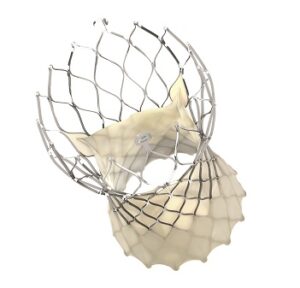This advertorial is sponsored by Medtronic

Transcatheter aortic valve implantation (TAVI) has been a game-changing therapy for the treatment of aortic stenosis, providing a minimally invasive therapy for patients who may previously have had no other option. As the valve technologies and implant techniques continue to mature, there is an increasing recognition of the need to tailor the therapy to respond to the differing needs of specific patient populations.
To date, there has been very little research conducted on TAVI performance in the population of patients with small aortic annuli—believed to represent up to 40% of patients who undergo a TAVI procedure. More significantly, this is a subset of patients that is overwhelmingly female, a population that has been acknowledged as underdiagnosed and undertreated for aortic stenosis.
“Among all the countries in Europe fewer females are treated for aortic valve stenosis than males, and among treated females, a higher percentage than males receive TAVI,” Sabine Bleiziffer (Herz- und Diabeteszentrum NRW, Bad Oeynhausen, Germany) tells Cardiovascular News, setting out the scale of this disparity and pointing to factors that may contribute to differences in the diagnosis, treatment and outcomes between male and female aortic stenosis patients. “Females and males have the same incidence of aortic valve stenosis, so there seems to be a clear [indication of] undertreatment.”
SMART Trial: Comparing TAVI devices in small aortic annuli
Bleiziffer is among the investigators in the SMART trial, the first randomised trial to compare two of the most commonly used TAVI valves in the world today: the supra-annular self-expanding Evolut (Medtronic) family of TAVI devices, which includes the Evolut PRO, PRO+ and FX systems, against the balloon-expandable Sapien 3 and Sapien 3 Ultra (Edwards Lifesciences) suite of devices. The trial was conducted in patients with small aortic annuli—defined in this context as a valve annulus measuring 430mm2 or less—and uniquely for a trial in the cardiovascular arena investigators enrolled an overwhelmingly female population with 87% of the 716 patients taking part in the study being women.
“I think there was a little bit of an under recognition of these patients because they certainly represent a very challenging population for aortic valve replacement,” says Bleiziffer. The challenging nature of TAVI in small annuli means that valve selection in this patient population is an important step in achieving the best haemodynamic results from the procedure. Patient-prosthesis mismatch, where an implanted prosthetic valve is too small for the patient, is one of several factors that can impact outcomes, for example.
Headline findings from the SMART trial at one year were among the most hotly-anticipated data presented at the American College of Cardiology (ACC) 2024 scientific session (6–8 April, Atlanta, USA) and the findings were published simultaneously in the New England Journal of Medicine.
In the trial, patients treated at one of 83 sites in 13 countries worldwide (mean age: 80 years), were randomised 1:1 to receive either an Evolut supra-annular valve or a Sapien balloon-expandable valve. Investigators comparing the two devices against the co-primary endpoints of a composite of death, disabling stroke, or rehospitalisation for heart failure, tested for non-inferiority at one year, and a composite of bioprosthetic valve dysfunction, tested for superiority.
Results showed that the supra-annular Evolut TAVI platform met the co-primary endpoint of clinical non-inferiority, with a reported incidence rate of 9.4%, compared to 10.6% in the Sapien arm of the study (p<0.001 for non-inferiority).
Significantly, the Evolut TAVI valve also demonstrated superiority for the valve function primary endpoint, bioprosthetic valve dysfunction through one year, occurring in 9.4% of patients in the Evolut arm versus 41.6% in the Sapien treatment group (p<0.001 for superiority).
“The SMART trial for the first time really shows that the physician can influence results by the choice of valve type,” says Bleiziffer of these results, which could be significant for TAVI practice worldwide.
Prosthesis mismatch, valve gradient and other factors influencing valve choice
SMART trial investigators also reported several secondary endpoints, which included patient-prosthesis mismatch at 30 days, reported to have occurred in 11.2% of the patients in the supra-annular Evolut valve group and 35.3% of those in the balloon-expandable Sapien valve group (p<0.001). “Patient-prosthesis mismatch is a parameter that can be influenced and valve choice is an important factor to this,” says Bleiziffer, reflecting on this finding in particular.
Also of note, patients in the Evolut TAVI group had an aortic-valve mean gradient of 7.7mmHg at 12 months compared to 15.7mmHg in the Sapien balloon-expandable valve group, whilst the percentage of patients with haemodynamic structural valve dysfunction stood at 3.5% in the Evolut group and 32.8% among Sapien patients.

“In my world it was already usual to choose supra-annular valves in patients with a small annulus, but now we have the data to prove what we are doing,” says Bleiziffer, weighing up how these results could impact her practice.
Commenting on the mechanism that may make supra-annular the suitable choice in the treatment of aortic stenosis in patients with small annuli, Bleiziffer comments that the placement of the valve leaflets above rather than inside the annulus is likely to be the important difference in design that confers an advantage.
“The valve configuration is not disturbed by any annular asymmetric calcifications, because the leaflet function is not influenced, as the leaflet sits above the annulus,” she says. “The intra-annular or balloon-expandable valve sits inside the annulus and can be constricted by a small annulus and not develop its full possible function.”
Exercise sub-analysis among the future SMART trial updates to watch
TAVI operators can expect to see more data from the SMART trial coming down the track, with investigators following patients out to five years to assess outcomes, as well as further sub-analyses in specific components of the trial assessing other ways that TAVI device choice may impact patients.
“I personally am very interested to see the data from the exercise sub-study of the SMART trial,” comments Bleiziffer. “In the past we could demonstrate in a subset of patients with biological surgical aortic valve replacement that patients with mismatch have an impaired exercise capacity. I expect that we will find the same thing from patients within the SMART trial.”
Assessing comparative performance of both valves in terms of valve deterioration will also be important going forward, and Bleiziffer describes this as “something we will have to look at in the future”.
“There are some signs that good valve function can influence long-term outcomes and will have less valve deterioration, if you have a low gradient and a good valve function from the beginning. I think that is something we still need to evaluate and the SMART trial gives us the opportunity to add data to this topic,” she concludes.













